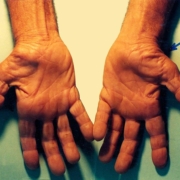7 Common Posture Mistakes That Cause Back Pain
7 Common Posture Mistakes That Cause Back Pain: Are You Making These Errors?
In our fast-paced, technology-driven world, maintaining good posture often takes a back seat—quite literally. Many of us find ourselves hunched over screens or slouched on couches, unaware that these seemingly innocent habits can lead to nagging back pain. In this listicle, we’ll explore seven common posture mistakes that could be silently sabotaging your spine. By identifying these pitfalls, you’ll gain valuable insights into how to correct them, ultimately paving the way for a more comfortable, pain-free life. From your workspace setup to the way you carry your bags, discover the small changes that can make a big difference in your posture and overall well-being. Let’s dive in and reclaim the health of your back!
1) Slouching in Your Chair: One of the most common posture mistakes is slouching while sitting. This habit not only puts undue stress on your spine but also weakens your core muscles over time, leading to chronic back pain
One of the most prevalent posture pitfalls is the tendency to slouch while seated. This seemingly harmless habit can lead to a cascade of issues over time. When you hunch over, your spine is forced into an unnatural curve, which can cause significant stress on the vertebrae and surrounding muscles. As a result, you may experience discomfort that radiates from your lower back up to your neck. Furthermore, slouching inhibits proper breathing, reducing oxygen flow and affecting overall energy levels. It’s a cycle that can perpetuate fatigue and exacerbate discomfort.
To combat this issue, it’s vital to cultivate awareness of your sitting position. Here are a few tips to help you maintain an upright posture:
- Adjust Your Chair: Ensure your chair supports your lower back and promotes a neutral spine position.
- Feet on the Floor: Keep your feet flat on the ground or on a footrest to distribute weight evenly.
- Screen Height: Position your computer screen at eye level to prevent leaning forward.
- Take Breaks: Stand up and stretch every 30 minutes to relieve tension and reset your posture.
Implementing these strategies can help strengthen your core muscles and alleviate the strain caused by poor posture. Over time, you’ll notice a significant reduction in back pain, along with improved overall well-being.
2) Hunching Over Your Phone: With the rise of smartphone usage, many people find themselves hunching over their devices for extended periods. This forward head posture can strain the neck and upper back, contributing to discomfort and pain
As smartphones have become an integral part of our daily lives, many of us have developed a habit of hunching over our devices for hours on end. This common posture, often referred to as “tech neck,” can lead to significant strain on the neck and upper back muscles. When you lean forward to check your messages or scroll through social media, the weight of your head—approximately 10 to 12 pounds—places undue pressure on your cervical spine. Over time, this can result in chronic discomfort, tension headaches, and even long-term spinal issues.
To combat the negative effects of this posture, consider implementing the following strategies:
- Raise Your Screen: Position your phone or tablet at eye level to minimize the need to look down.
- Take Breaks: Set a timer to remind yourself to take a break every 20 minutes to stretch and realign your posture.
- Strengthen Your Core: Incorporate exercises that target your core and upper back to improve overall stability and posture.
Additionally, maintaining awareness of your posture while using your devices can make a significant difference. Consider using a simple table to track your daily phone usage and posture habits:
| Time Spent (Hours) | Posture Observed | Notes |
|---|---|---|
| 1 | Neutral | Good posture maintained |
| 2 | Hunched | Need to adjust screen height |
| 3 | Slouched | Take a break and stretch |
3) Poor Lifting Techniques: Lifting heavy objects without proper technique can wreak havoc on your back. Bending at the waist instead of the knees can lead to muscle strains and injuries, making it essential to practice safe lifting methods
When it comes to lifting heavy objects, many people instinctively bend at the waist, which can lead to serious back issues. This common mistake places undue stress on the spine and surrounding muscles, increasing the risk of strains and injuries. To avoid these pitfalls, it’s crucial to adopt proper lifting techniques that prioritize your back’s health. Here are some key points to remember:
- Engage your core: Tightening your abdominal muscles provides extra support to your spine.
- Bend your knees: Lower your body by bending at the knees rather than the waist, keeping your back straight.
- Keep the load close: Hold the object close to your body to reduce strain on your back.
Additionally, understanding the mechanics of lifting can further safeguard your back. Consider using tools such as dollies or lifting straps for particularly heavy items. If you frequently lift heavy loads, incorporating strength training exercises that target your back and core can enhance your overall stability and reduce the likelihood of injury. Here’s a simple comparison of safe versus unsafe lifting techniques:
| Safe Lifting Techniques | Unsafe Lifting Techniques |
|---|---|
| Bend at the knees | Bend at the waist |
| Keep the load close | Extend arms away from body |
| Engage core muscles | Relax abdominal muscles |
4) Crossing Your Legs While Sitting: While it may feel comfortable, crossing your legs can throw your pelvis out of alignment and create tension in your lower back. This subtle shift can lead to discomfort over time, especially if you sit for long periods
Many of us have a habit of crossing our legs while sitting, often believing it adds comfort or style to our posture. However, this seemingly innocuous position can lead to a cascade of issues for your body. When you cross your legs, it creates an uneven distribution of weight on your pelvis, which can lead to an imbalance in your spine. Over time, this misalignment may contribute to persistent discomfort in your lower back, especially if you find yourself glued to a chair for prolonged periods.
To mitigate the risks associated with this posture, consider adopting more ergonomically friendly sitting positions. Here are some alternatives to crossing your legs that can help maintain better alignment:
- Keep your feet flat on the floor: This promotes even weight distribution.
- Use a footrest: If your feet don’t reach the ground, a footrest can help.
- Maintain a neutral spine: Sit back in your chair, ensuring your back is straight.
- Shift positions regularly: Change your sitting position every 30 minutes to relieve tension.
5) Standing with Weight on One Leg: Many people unconsciously shift their weight to one leg while standing, which can lead to muscle imbalances and strain on the lower back. Maintaining even weight distribution is key to preventing pain and discomfort
Many individuals may not realize they have a tendency to unconsciously shift their weight onto one leg while standing. This seemingly harmless habit can lead to a variety of issues, including muscle imbalances and increased strain on the lower back. Over time, this uneven weight distribution can cause certain muscles to become overworked while others weaken, ultimately resulting in discomfort and pain. To combat this, it’s essential to develop an awareness of your posture and practice even weight distribution across both legs.
To help maintain proper posture and alleviate potential back pain, consider implementing the following strategies:
- Engage Your Core: Activating your core muscles can provide stability and support, reducing the tendency to lean on one leg.
- Shift Your Weight Mindfully: Regularly check in with your body throughout the day and consciously distribute your weight evenly.
- Strengthen Your Legs: Incorporate exercises that target both legs equally to promote balance and prevent muscle imbalances.
- Use Supportive Footwear: Wearing shoes with good arch support can help maintain proper alignment and reduce strain on your back.
- Practice Standing Exercises: Engage in activities like yoga or balance training that encourage even weight distribution and body awareness.
To Wrap It Up
As we wrap up our exploration of the seven common posture mistakes that can lead to back pain, it’s clear that awareness is the first step towards relief. By recognizing these pitfalls in our daily habits—whether at work, during exercise, or while simply relaxing at home—we can take proactive measures to improve our posture and, in turn, our overall well-being. Remember, small adjustments can lead to significant changes. So, as you go about your day, keep these insights in mind and strive for a posture that supports a healthier, pain-free life. Your back will thank you!










Leave a Reply
Want to join the discussion?Feel free to contribute!